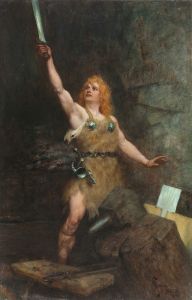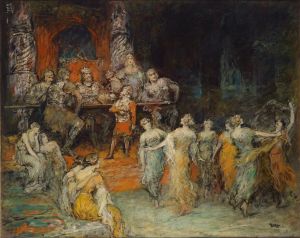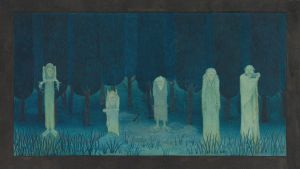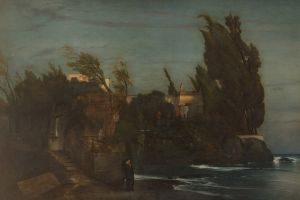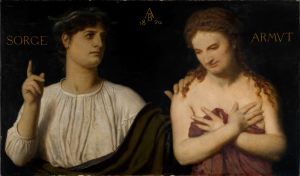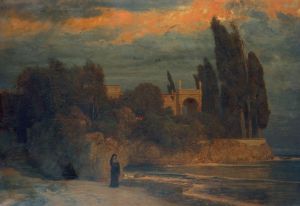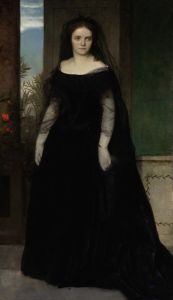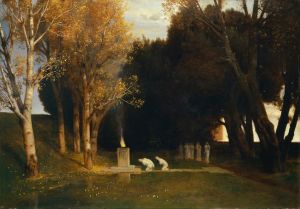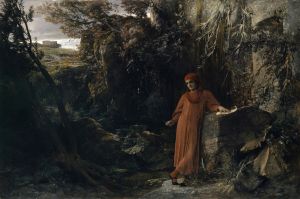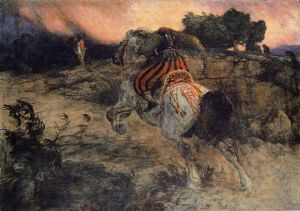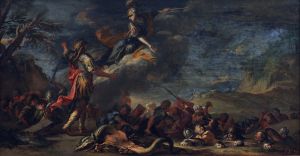
The March of the Goths
A hand-painted replica of Arnold Böcklin’s masterpiece The March of the Goths, meticulously crafted by professional artists to capture the true essence of the original. Each piece is created with museum-quality canvas and rare mineral pigments, carefully painted by experienced artists with delicate brushstrokes and rich, layered colors to perfectly recreate the texture of the original artwork. Unlike machine-printed reproductions, this hand-painted version brings the painting to life, infused with the artist’s emotions and skill in every stroke. Whether for personal collection or home decoration, it instantly elevates the artistic atmosphere of any space.
Arnold Böcklin was a Swiss symbolist painter known for his imaginative and often fantastical works. One of his notable paintings is "The March of the Goths," which reflects his interest in mythological and historical themes. Böcklin's work often combines elements of the natural world with the supernatural, creating a unique and evocative style that has captivated audiences since the 19th century.
"The March of the Goths" is a painting that exemplifies Böcklin's fascination with historical and legendary subjects. The Goths were a group of East Germanic tribes known for their role in the fall of the Western Roman Empire and their subsequent influence on European history. Böcklin's depiction of the Goths likely draws on the romanticized view of these tribes as noble and powerful warriors, a common theme in 19th-century art and literature.
In the painting, Böcklin captures the movement and energy of the Goths as they march, possibly evoking a sense of their historical migrations and conquests. His use of color and composition would typically aim to convey the drama and intensity of the scene, although specific details about the painting's composition and style are not widely documented. Böcklin's work often features a rich palette and dynamic forms, which would be consistent with the themes of movement and power suggested by the title.
Böcklin's interest in myth and history is evident in many of his works, and "The March of the Goths" fits within this broader context. His paintings often explore the intersection of the human and the mythical, creating a sense of timelessness and universality. This approach allows viewers to engage with historical subjects in a way that transcends specific historical narratives, focusing instead on the emotional and symbolic resonance of the imagery.
While detailed information about "The March of the Goths" is limited, Böcklin's broader body of work provides insight into his artistic intentions and methods. His paintings are characterized by their dreamlike quality and their ability to evoke a sense of mystery and wonder. Böcklin's influence can be seen in the work of later artists, particularly those associated with the Symbolist and Surrealist movements, who admired his ability to blend reality with fantasy.
Overall, "The March of the Goths" is a testament to Arnold Böcklin's skill as a painter and his ability to capture the imagination of his audience. Through his depiction of historical and mythical themes, Böcklin invites viewers to explore the deeper meanings and emotions behind the stories and legends that have shaped human history. His work continues to be celebrated for its originality and its contribution to the development of modern art.






